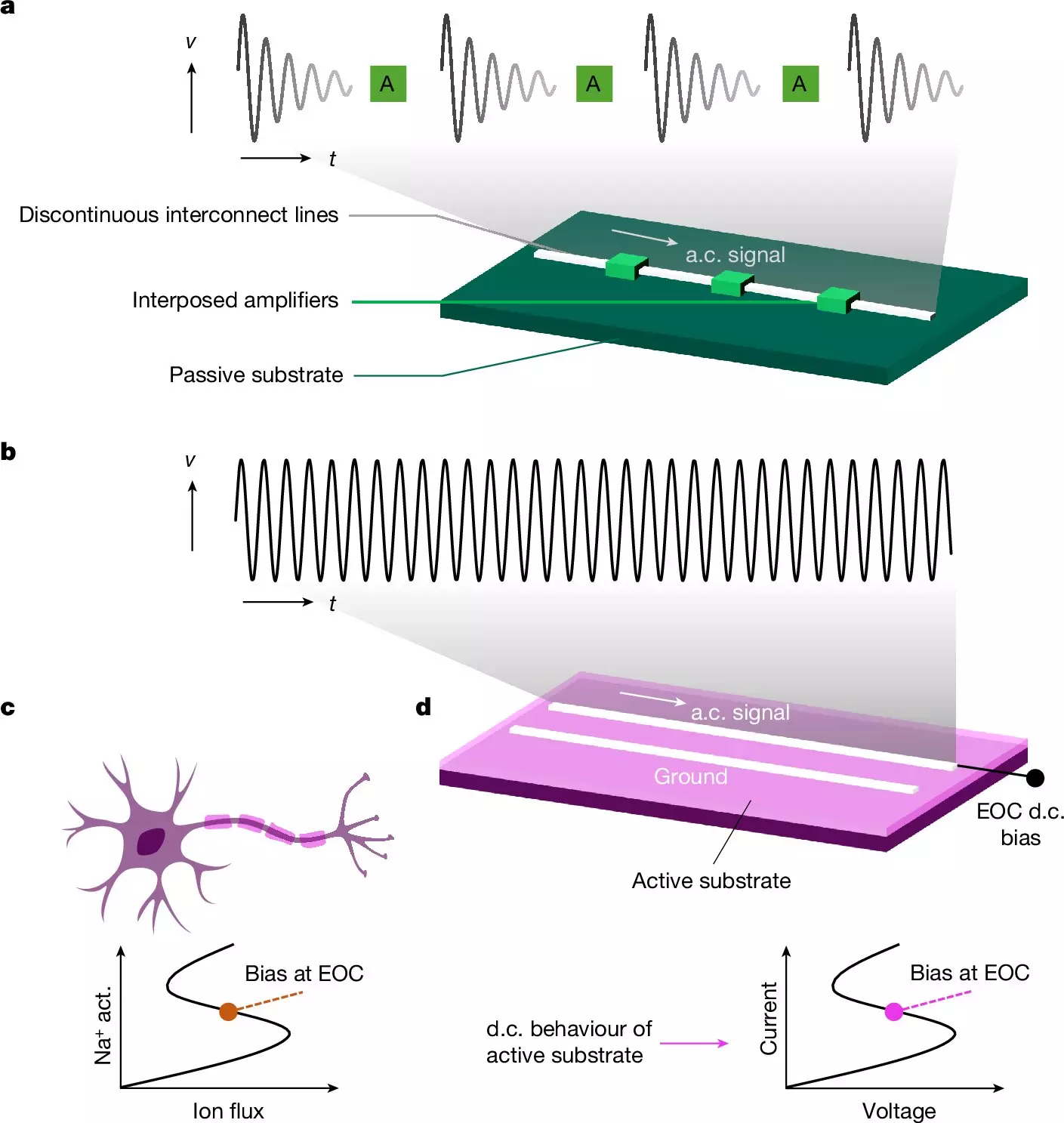As we delve into the realm of advanced computing, a remarkable study emerges from a collaboration among researchers at Texas A&M University, Sandia National Laboratories, and Stanford University. This groundbreaking research explores the concept of designing new materials that replicate the functions of biological systems, particularly the behavior of axons in neurons. The core finding highlights a new class of materials capable of propagating electrical signals efficiently—a possibility that promises significant advancements in the future of computing and artificial intelligence.
Your typical electronic devices utilize copper wires to transmit signals; however, these metallic conductors are not without their flaws. They inherently lose signal amplitude due to their resistance, leading to the necessity of amplifiers, which can consume additional energy and space. This situation is far from optimal for the dense interconnect configurations found within contemporary computer chips, which can comprise, astonishingly, up to 30 miles of intricate wiring. The need to address these limitations forms the basis of this novel research.
The researchers focused their efforts on drawing parallels between traditional electrical engineering and biological systems. The axon, a vital part of a neuron, transmits electrical impulses over considerable distances with remarkable efficiency. Unlike metals, the organic materials that constitute axons do not require amplification during transmission, which presents a fascinating model for engineers. Dr. Tim Brown, a lead author of the study, emphasizes this unique quality: “Biology does things differently.” He draws attention to how the brain can maintain signal strength across centimeters without interruptions, shedding light on the inefficiencies present in current computing architecture.
The crux of their investigation lies in the ability of certain materials to mimic this biological behavior. The researchers discovered that a compound known as lanthanum cobalt oxide exhibits transformative electrical properties when subjected to heat. As the material heats up, its conductivity dramatically increases, self-amplifying any electrical signal it carries. This functionality offers an innovative solution to the decay of electrical pulses experienced in traditional circuitry. Here, the interaction between heat and signal results in a feedback loop—enhancing the pulse’s amplitude rather than diminishing it.
The research team dubbed this new behavior “spiking,” likening it to the action potentials in biological neurons that underpin nerve signaling. This innovative approach presents a marked shift from passive electrical components, such as resistors and capacitors, by introducing active behaviors that can amplify signals without the need for external energy sources. Dr. Patrick Shamberger, also a co-author of the study, elaborated on the significance of the research: “These materials are like communication highways in our nervous system.” This analogy draws a fascinating connection between neurobiology and next-generation computing.
These materials exist in a defined “Goldilocks state,” characterized by a balance that avoids both decay of electrical pulses and destructive thermal runaway. This unique stability allows for self-oscillation, enabling them to effectively amplify electrical signals during transmission—an exotic behavior not previously observed in conventional electronics.
The implications of this research extend beyond mere curiosity. As societal reliance on data centers and artificial intelligence increases, so too does the demand for efficient energy use in computing technologies. Predictions show that data centers could consume approximately 8% of U.S. electricity by 2030. By innovating in material science through biological inspiration, researchers aim to provide solutions that will mitigate this growing energy demand in computing systems.
This study’s contribution is a critical step toward enhancing our understanding of dynamic materials and their applications in building more efficient electronic systems. The notion of using biological principles to shape future technologies embodies a promising approach, unlocking potential pathways toward revolutionary computing systems where energy conservation becomes feasible without compromising performance.
While many challenges remain in translating these concepts into commercial technology, the groundwork laid by these researchers may pave the way for future innovations, enhancing both computing efficiency and the understanding of the intertwined relationship between biology and technology. As we stand on the brink of this new scientific frontier, it is evident that gaining insights from nature could lead to profound improvements in our technological capabilities.

